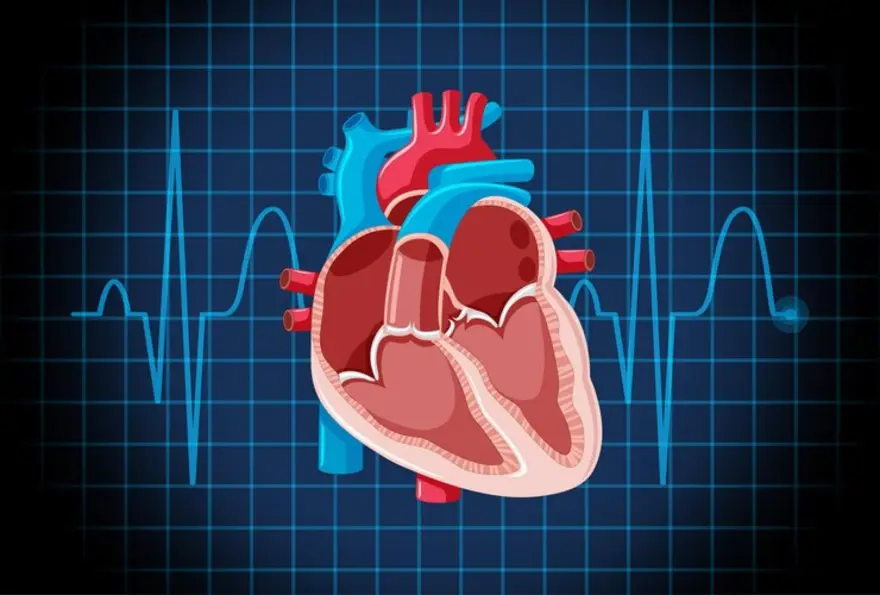arthritis pain symptoms
What is Psoriatic Arthritis: Symptoms, Treatment & Causes
Introduction Psoriatic arthritis is a type of arthritis that affects individuals with , the disease that causes red patches on your skin that are usually topped with silvery scales. Psoriasis can occur years before you may get diagnosed with psoriatic arthritis, but in rare cases, the joint pain can start before the development of the skin patches or even at the same time. Joint pain, swelling and stiffness are the main psoriatic arthritis symptoms but you can learn more about the symptoms, causes and treatment options below. What is Psoriatic Arthritis? This is a form of inflammatory arthritis that is characterised by swelling, joint pain and stiffness in the morning. It can vary from mild to severe and present in three different ways. Oligoarticular, which affects four or fewer joints in the body Polyarticular, affecting over four joints Spondylitis, this type, is less common but can affect the spine, hips, and shoulders. Symptoms of Psoriatic Arthritis Psoriasis and psoriatic arthritis are chronic diseases that can worsen over time. However, there can be several instances where the symptoms can improve and temporarily disappear. Since psoriatic arthritis affects the joints on either or both sides of the body, the symptoms are usually similar to rheumatoid arthritis. Both of these diseases cause your joints to swell, become painful, and cause the skin to feel warm to the touch. However, there are a few additional psoriatic arthritis symptoms in the case of psoriatic arthritis, such as Swollen fingers and toes: Psoriatic arthritis causes sausage-like swelling in your fingers and toes, which can become pretty painful. Foot pain: Psoriatic arthritis could be the reason behind pain in various areas where your ligaments and tendons meet the bones. Achilles tendinitis occurs at the heel's back and plantar fasciitis on the sole of your foot. Lower back pain: Many people who have psoriatic arthritis can also develop a condition known as spondylitis. This is caused due to inflammation of the joints between the vertebrae of the spine and the joints between the pelvis and spine. Changes in nails: Your nails may show tiny dents, crumble or even separate from the nail beds. Eye inflammation: Psoriatic arthritis is one of the main reasons behind uveitis, which can cause pain, blurry vision and eye redness. It can also lead to loss of vision if left untreated. Fatigue: A study in 2021 found that fatigue is another primary symptom associated with psoriatic arthritis. Skin: Similar to psoriasis, individuals with psoriatic arthritis will observe raised patches of itchy skin covered with silvery scales. Causes of Psoriatic Arthritis Psoriatic arthritis is an autoimmune disorder that recognises healthy tissue as a foreign object and launches an attack against it. In many cases, the error of the immune system can create inflammation, damage to joints and cause chronic pain. Genetics: Most medical experts are still unsure about what causes an immune system disorder. Still, one sure thing is that autoimmune diseases tend to run in the family, which points to genetics being a main factor for the conditions. Environmental triggers: Psoriatic arthritis also has environmental triggers like throat infections and physical trauma. It is believed that individuals with psoriasis who experience physical trauma are more likely to develop psoriatic arthritis than those whit psoriasis that do not experience trauma. Other factors: Psoriatic arthritis can also be triggered by stress, alcohol, smoking, inflammatory foods or a sudden withdrawal of corticosteroids or other medication. diagnosis of Psoriatic Arthritis To diagnose psoriatic arthritis, a doctor, usually a rheumatologist specialising in arthritis and other inflammatory diseases, will conduct a physical examination after asking the patient about their symptoms. They will also examine skin for signs of psoriasis and look for swollen joints or other joint deformities. Some of the tests they may recommend are imaging tests to view damage in joints, blood tests to evaluate the levels of inflammation, and skin biopsy to confirm if the skin lesions are signs of psoriasis. treatment of Psoriatic Arthritis Although there is no known cure for psoriatic arthritis at this time, a rheumatologist will recommend several different Psoriatic arthritis treatment options that include medication and lifestyle changes depending on the severity of the disease. Medication Most of the medications prescribed to individuals with psoriatic arthritis are aimed at reducing inflammation. These include Nonsteroidal anti-inflammatory drugs (NSAIDs) Steroids Skin creams Biologics Lifestyle changes A healthy lifestyle is perfect for most people, but it is perfect for anyone diagnosed with a chronic or debilitating disease. Here are the following lifestyle changes that the Arthritis Foundation suggests Eat healthy: It is essential to eat food that is good for your joints and heart and steer clear of inflammatory foods like dairy, alcohol, meats and processed food. Maintain a healthy weight: Excess amounts of body fat can increase the amount of inflammation in the body. Exercise: Low-impact physical activities like swimming, walking, biking, etc., are helpful for joint pain. Such movement helps reduce stiffness and maintain the muscles that support your joints. In conclusion Living a happy, healthy life is possible even with psoriatic arthritis. All you need to do is monitor your symptoms, follow your treatment plan, recognise and avoid things that cause flares, and seek mental health treatment if you struggle with triggers like depression, trauma, stress and anxiety. Regular blood tests can also help you keep track of your health and inflammation levels allowing you to mend your plan of action accordingly. Metropolis Labs offers a wide range of diagnostic tests that will enable you to keep regular tabs on your health and you can do this all from the comfort of your home, with a home collection of blood samples and the promise of quick and accurate test results.
Back pain: Causes, Symptoms, Diagnosis, Prevention
Do you often find yourself taking leave from work over your back pain? Well, it is one of the most common reasons people consult a doctor and miss work. Back pain can tamper with one’s daily routine and can be highly uncomfortable. Muscles, ligaments, tendons, and bones together constitute the human back, they work in tandem to support the body and help us move around. Problems with either of these can affect your back adversely. According to WHO, approximately 80% of the population suffers from back pain at least once during their lifetime. Back pain is one of the common problems seen in people across all age groups. Back pain in women But unlike men, there are a lot of changes that happen in a woman with age right from hormonal changes to menstruation and pregnancy that take a toll on the back. Whether you’re a working woman or a housewife, it goes without saying that every woman has a massive workload and long working hours both at the office and home which affects her overall health. However, the back and the spinal cord which are the pillars of the body are the ones that are most affected. Take extra care of your health with Metropolis TruHealth Smart Women Health Package. What are the possible causes of back pain ? The most common cause of back pain is muscle strain and incorrect posture. Other causes include: Long working hours while sitting in chairs and lack of exercise Obesity · Poor posture: Often we don’t realize, but while sitting or working on computer screens, we tend to adopt a hunched back position, this results in back as well as shoulder pain later on. Muscle spasm, fractures, damaged disks (cushions between our bones in the spine) Bulging or ruptured discs: Rupturing of a disc can cause extra pressure on a nerve, and press the nerve causing your back pain. Similarly, bulging discs can also put pressure on your nerves and lead to debilitating backaches. Osteoporosis: When your bones become brittle, your spine’s vertebrae can develop small painful fractures. Arthritis: Another major cause of back pain is spinal osteoarthritis, which is due to damage in the cartilage of joints in the lower back. Eventually, the space around the spinal cord starts to get narrower, leading to what is known as spinal stenosis. This could be another type of arthritis too. Book a test here and know if it can be rheumatoid arthritis. Watch out for these symptoms ! A shooting pain anywhere on the back or a burning or stabbing sensation that sometimes runs down till your leg or the foot. If it is due to muscle strain, or posture, that pain is usually short-lived, maybe a few days or weeks. But if you suffer from back pain for more than 3 months, you should consult a doctor. Mostly the pain goes away with minor treatment, exercise, or self-care, but if the back pain is accompanied by fever, numbness in the legs, constant weakness, weight loss, or difficulty while urinating, you should seek immediate medical assistance. Diagnosis for back pain You have acute pain if the pain lasts for a few weeks, but if the pain is persistent, and lasts for more than 3 months, it is a chronic or long-term pain that needs medical supervision. Your doctor will examine and assess your back and if they suspect something, they might order one of the following tests- X-ray: An X-ray is done to check the alignment of the bones, and help detect signs of broken bones or arthritis. MRI or CT scans: Since X-rays don’t show any damages to the soft tissues, it is important to have an MRI done, to detect problems with blood vessels, muscles, nerves, and ligaments. Blood tests: Though it is a rarity to order for blood tests, it can be helpful when you want to determine whether some infection is the cause of your back pain. Bone scans: These scans are done to check if there is a bone tumor or compression fractures due to osteoporosis, basically performed to detect any sort of abnormalities in your bone tissue. EMG (electromyography): It is a nerve study that measures the electrical impulses produced by nerves and how your muscles react to them. Treatment of back pain While for acute pain, pain relief medicines, and warm water heating can be sufficient, for chronic pain conditions, the doctor suggests medications like- Over-the-counter pain relievers Topical pain relievers such as creams, ointments, sprays, or patches. Muscle relaxants Back pain can be a debilitating and life-changing condition. Hence, if you have a backache that is recurrent in nature or if your back pain fails to show any improvement even after taking sufficient rest, it is wise to consult a spine specialist. Prevention is better than cure Being a little careful and agile can go a long way in curtailing the risk of back pain. Here are a few tips you can follow, in order to ease that back pain. Calcium and vitamin D for better muscle and bone health: Include calcium and vitamin D in your diet. Let your bones, muscles, and joints heal from severe back pain. Check your calcium and vitamin D levels here. Posture: Your posture while sitting as well as while standing can immensely impact your back. While sitting, always try to have your knees and hips leveled and keep your feet flat on the floor, if you use a keyboard, have your elbows at right angles and support your back, at the same time, when sitting for long hours. While standing, your back should always be straight, and you should balance your body weight evenly on both your feet. Regular exercise: Flexibility training can help with back pain, a professional would be better able to guide you through exercises that will help build strength and keep your body weight in control as well. Other precautions include wearing comfortable shoes, using a comfortable mattress, not smoking, and keeping your body weight in check. With daily stretches, a proper diet, and maintaining correct postures, you can avoid and prevent back pain easily. Your back endures a lot of wear & tear over the course of a lifetime- Take care of it!
 Home Visit
Home Visit Upload
Upload
















 WhatsApp
WhatsApp